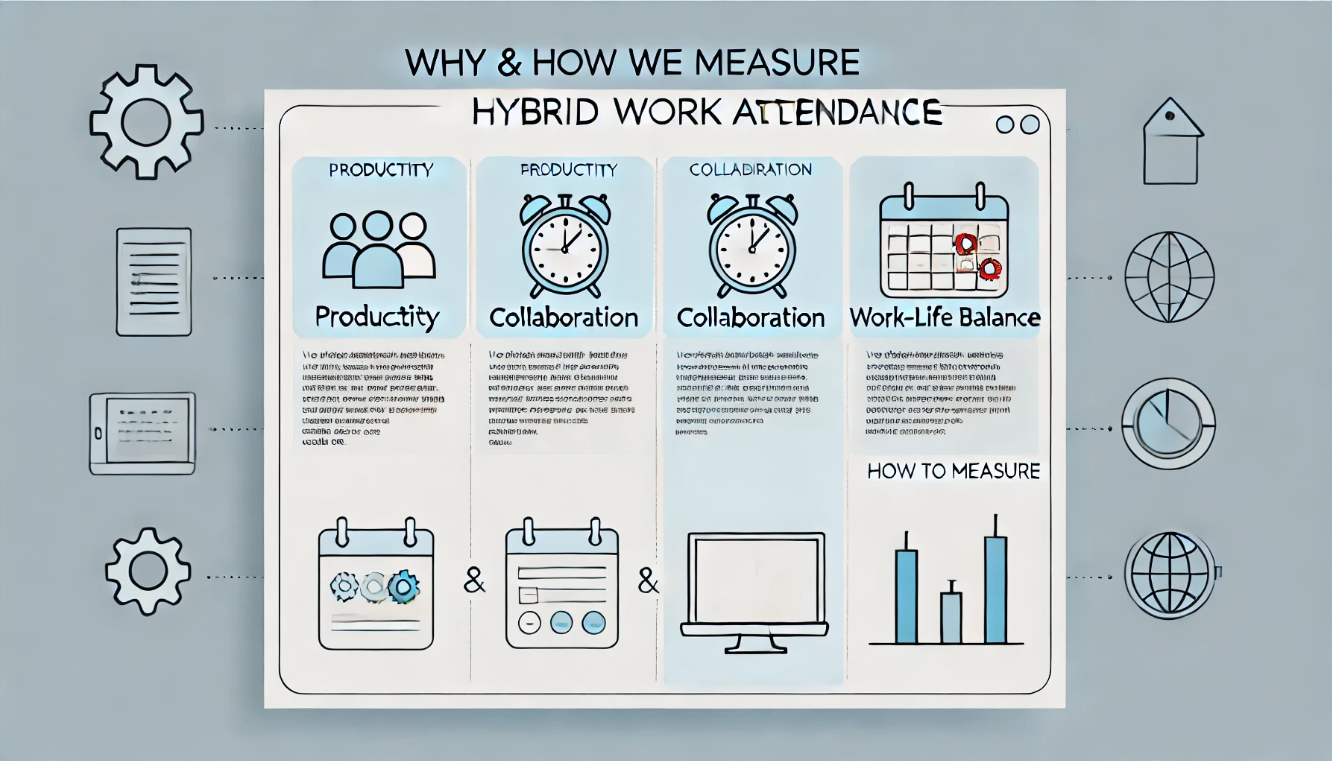Background: Hybrid work is a widely practice among most office workers.
Hybrid work, a blend of remote and in-office work, has become a prevalent practice among office workers globally. This model offers flexibility, allowing employees to split their time between working from home and the office. The rise of hybrid work has been driven by advancements in technology, enabling seamless communication and collaboration through tools like video conferencing, cloud services, and project management software.
One of the key benefits of hybrid work is improved work-life balance. Employees can tailor their schedules to better fit personal commitments, reducing stress and increasing job satisfaction. Additionally, hybrid work can lead to increased productivity, as workers can choose environments that best suit their tasks, whether it’s the quiet of home for focused work or the collaborative atmosphere of the office for team projects.
Employers also benefit from hybrid work by reducing overhead costs associated with maintaining large office spaces. Moreover, it allows companies to tap into a broader talent pool, as geographic location becomes less of a constraint.
However, hybrid work also presents challenges, such as ensuring equitable access to resources and maintaining a cohesive company culture. Effective hybrid work requires clear communication, robust IT infrastructure, and policies that support both remote and in-office employees.

Why we need measure the hybrid work attendance?
The primary objective of measuring attendance is to ensure tasks are completed efficiently, enhance employee engagement and collaboration, and foster a positive company culture. Different CEOs have varying preferences for hybrid work models, ranging from highly flexible arrangements to nearly full in-person attendance. Monitoring hybrid work attendance is essential for several reasons:
- Productivity and Performance Tracking: By monitoring attendance, employers can ensure that employees are meeting their work commitments, whether they are working remotely or in the office. This helps in assessing productivity and identifying any potential issues early on.
- Resource Allocation: Knowing when and where employees are working allows companies to better allocate resources. For instance, if certain days have higher in-office attendance, employers can ensure that there are enough workstations, meeting rooms, and other facilities available.
- Employee Engagement and Well-being: Regular attendance tracking can help identify patterns that might indicate employee burnout or disengagement. For example, if an employee consistently avoids coming to the office, it might signal a need for a conversation about their work environment or personal circumstances.
- Compliance and Legal Requirements: Some industries and regions have specific regulations regarding work hours and attendance. Accurate tracking ensures that companies remain compliant with these laws, avoiding potential legal issues.
- Data-Driven Decisions: Attendance data can provide valuable insights for making informed decisions about company policies, office space utilization, and future hybrid work strategies. It helps in understanding trends and making adjustments to improve overall efficiency and employee satisfaction.
- Fairness and Equity: Measuring attendance ensures that all employees are held to the same standards, promoting fairness and equity within the organization. It helps in maintaining transparency and trust among the workforces.
By effectively measuring hybrid work attendance, companies can create a balanced and productive work environment that benefits both the organization and its employees.
How to measure your employees’ hybrid work attendance?
Measuring hybrid work attendance involves several strategies and tools to ensure accurate and effective tracking. It can be measured from the basic presence data like Office Desk booking, Office Room booking, Office presence when travel in the different locations. If you want to measure those data with accuracy, it can be combined with check in/out data from different applications or physical tools, like:
- Digital Attendance Systems: Implementing software solutions that allow employees to log their attendance digitally, whether they are working remotely or in the office. These systems can include time-tracking apps, biometric scanners, or card swipes for in-office attendance.
- Calendar Integration: Encouraging employees to use shared calendars to mark their working hours and locations. This helps managers and team members know who is available and where they are working on any given day.
- Regular Booking & Check-ins: Scheduling regular booking & check-ins when they book the office desks or rooms. Just encourage the team to click the right button, the system will generate the right data and insights of analytics.
- Automated Reporting: Setting up automated reports that compile attendance data from various sources, providing managers with a comprehensive view of who is working and where. This can include data from digital attendance systems, project management tools, and calendars.
- Surveys and Feedback: Periodically conducting surveys to gather feedback from employees about their hybrid work experience. This can provide insights into attendance patterns and any challenges employees might be facing.
- Geolocation Tracking: Some companies use geolocation tracking to monitor where employees are working from. This can be done through mobile apps that log the location when employees start and end their workday.

By combining these methods, companies can effectively measure hybrid work attendance, ensuring that employees are engaged, productive, and supported in their work environments. If you want to know more about successful hybrid work cases, please download Yokogawa Hybrid Work Practice 2022-2024.
About the author:
Cheng Ye, founder and solution Director of Gaia Workspace, with 25 years of experience in B2B application development, and a professional presence spanning Asia, Europe, and America.
